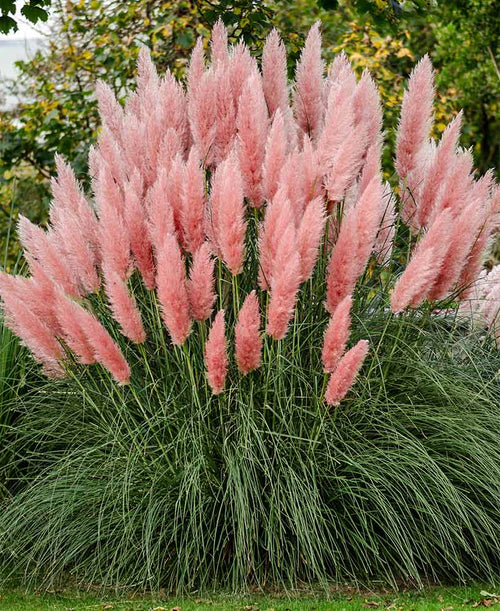Embracing Biodiversity and Nurturing Ecosystems
In a world where urbanization and habitat destruction threaten the natural world, cultivating a wildlife-friendly garden has gained immense significance. Such parks offer a tranquil retreat for humans and essential sanctuaries for diverse wildlife. A thriving wildlife-friendly garden is a testament to our commitment to coexisting with nature and promoting biodiversity. In this endeavor, various plant species play a crucial role; among them, the White Oak, Red Oak, and Chestnut Oak trees stand tall.
White Oak (Quercus alba)
The Majestic Provider: White Oak trees are picturesque giants in the forest and essential contributors to wildlife sustenance. They are known for their broad canopies and distinctive leaves with rounded lobes. What sets White Oaks apart is their production of acorns, a vital food source for numerous wildlife species. Squirrels, deer, turkeys, and even insects rely on these nutrient-rich acorns for sustenance. Moreover, the hollows and crevices of White Oak trees provide nesting sites for birds like woodpeckers and owls, contributing to the avian ecosystem.
Red Oak (Quercus rubra)
A Hub of Activity: Red Oak trees stand as charismatic symbols of strength and endurance. Their serrated leaves and vibrant autumn colors make them a visual treat. While Red Oaks also produce acorns, they have a slightly different impact on wildlife. Various animals prefer their acorns, including jays, squirrels, and deer. These trees offer not only nourishment but also shelter. The canopy of a Red Oak becomes a bustling community of songbirds, providing cover and nesting spots. This interaction between plants and animals underscores the intricate web of life in a wildlife-friendly garden.
Chestnut Oak (Quercus montana)
A Haven for Diversity: Chestnut Oak, a sturdy and adaptable species, deserves a special place in any wildlife-friendly garden. Its coarsely toothed leaves and distinctive chestnut-like acorns make it easily recognizable. Chestnut Oaks cater to wildlife, from small mammals to birds and insects. They provide food in the form of acorns and serve as cozy shelters for creatures seeking refuge. Moreover, the presence of Chestnut Oaks can support entire ecosystems, as their leaves and branches become habitats for lichens, mosses, and fungi.
Acorns - Nature's Bounty
Acorns, often overlooked forest gems, are critical for the wildlife food chain. The growth of majestic trees begins with these tiny seeds, and the ripples of their influence extend far beyond. Animals like squirrels, chipmunks, and deer heavily rely on acorns for their nutritional needs. By planting oak trees and encouraging the growth of acorn-producing species, a wildlife-friendly garden becomes a thriving habitat for diverse species.
Native Grasses Big Bluestem and Little Bluestem:
Native grasses play an essential role in a wildlife-friendly garden by offering nesting materials, shelter, and food for various creatures. Big Bluestem and Little Bluestem are prominent species contributing to the ecosystem. Big Bluestem, with its towering stalks, covers small animals and sustains grazing animals. Little Bluestem, with its distinctive reddish-brown stems, adds texture to the landscape and attracts insects that, in turn, become food for birds.
Fruit-Bearing Trees
Apple, Persimmon, and Elderberry: Incorporating fruit-bearing trees into a wildlife-friendly garden adds another layer of sustenance. Apple trees (Malus domestica) provide fruit for human consumption and attract birds and insects. Persimmon trees (Diospyros virginiana) produce sweet fruits relished by mammals and birds alike. Elderberry (Sambucus nigra) not only has edible berries for wildlife but also offers nectar for pollinators. These trees foster a holistic environment where life thrives in abundance.
Wildflowers and Understory Plants
Marigolds, Milkweed, Goldenrod, and Cinnamon Ferns: Wildflowers and understory plants are the colorful threads that weave together a vibrant, wildlife-friendly garden. Marigolds (Tagetes) add a splash of color and can deter certain pests. Milkweed (Asclepias) is essential for the survival of monarch butterflies, as their caterpillars feed exclusively on it. Goldenrod (Solidago) provides nectar for pollinators and adds a burst of yellow to the landscape. Cinnamon ferns (Osmundastrum cinnamomeum) offer shade and moisture, creating microhabitats for amphibians and insects.
Embracing Native Ferns
Native ferns are invaluable contributors to the garden's biodiversity. They thrive in shaded areas, offering refuge for creatures seeking cool and damp environments. Ferns like the Cinnamon fern mentioned earlier, and the Ostrich fern (Matteuccia struthiopteris) create a lush understory. Their presence enhances the garden's aesthetic appeal and nurtures the hidden corners where countless life forms reside. Nurturing Life Through Diversity. Creating a wildlife-friendly garden is an act of harmonizing with nature. Including White Oak, Red Oak, and Chestnut Oak trees ensures a steady supply of acorns, the lifeblood of countless animals. Native grasses, fruit-bearing trees, wildflowers, and native ferns collectively establish a nurturing environment for wildlife. As marigolds bloom, milkweed beckons butterflies and cinnamon ferns unfurl, the garden becomes a symphony of life, embodying the profound interconnectedness of all living beings. By embracing biodiversity and nurturing ecosystems, a wildlife-friendly garden becomes a sanctuary for creatures and the human soul.



















































